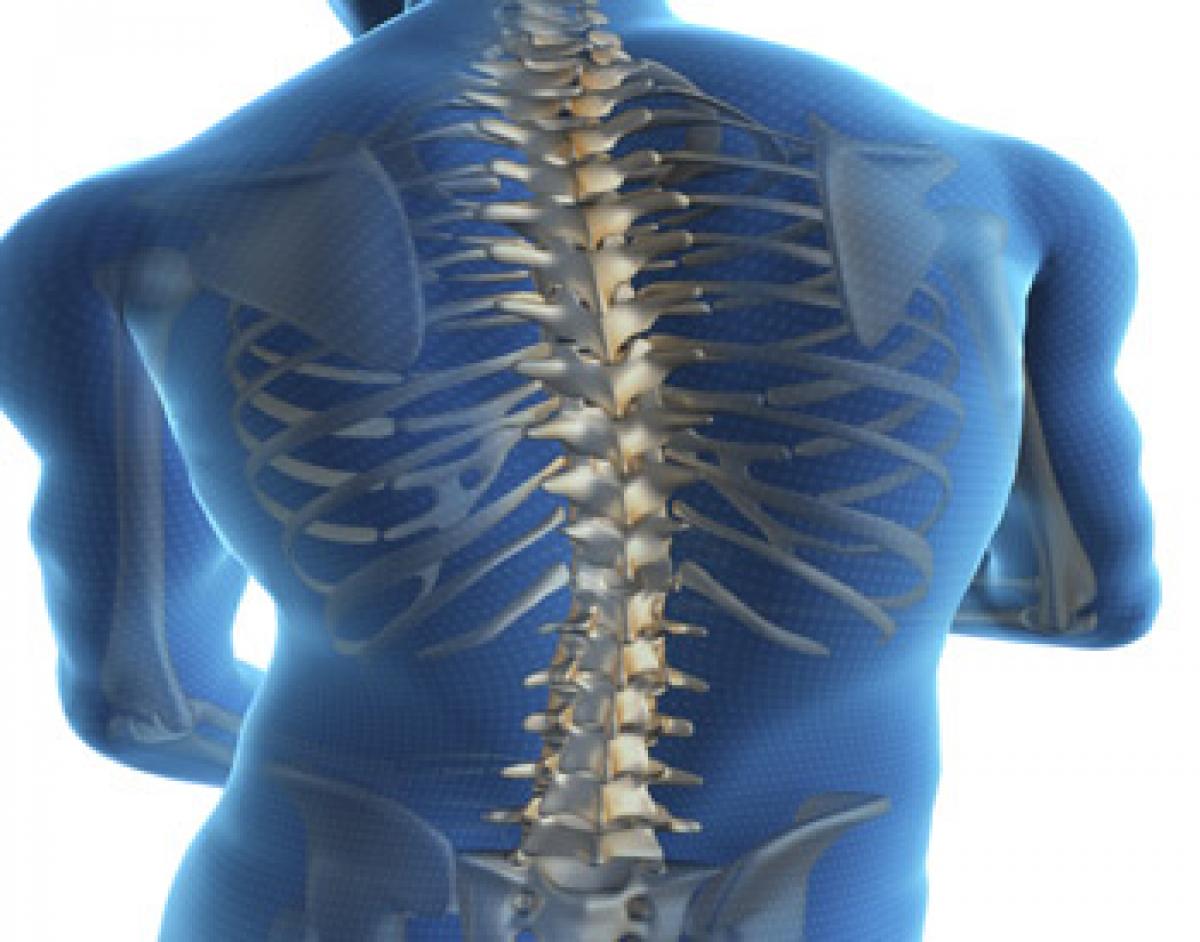Live
- Five-Year-Old Boy Dies After 55-Hour Rescue from Borewell in Rajasthan's Dausa
- Chaos in Parliament over Congress-George Soros link claims, BJP MP poses questions
- Bus Driver Arrested After Deadly Accident in Mumbai’s Kurla; 42 Injured
- Community lunch, a ritual to prevent drought in Adoni
- Rs 36.07 crore tribal products sold through TRIFED in FY24: Govt
- PM Modi to lay foundation stone for Ken-Betwa river linking project on Dec 25: MP CM
- 70 farmers trained as drone pilots in Anantapur dist
- AP Pensions: 500 Ineligible People Receive Pensions for Every 10,000
- South Korea's ruling party chief voices support for President Yoon's impeachment
- Defeat in Tirhut bypolls doesn't signify discontent among teachers: Bihar Education Minister
Just In

Time to keep Your Back at Work with safe spine surgeries. If you are a working professional and have to spend the larger part of the day staying put at your workstation, you most certainly have one or more back problems.
 It is time to train the spotlight on rising incidence of back pain and spinal problems especially among working professionals
It is time to train the spotlight on rising incidence of back pain and spinal problems especially among working professionals
If you are a working professional and have to spend the larger part of the day staying put at your workstation, you most certainly have one or more back problems. It has been revealed that lower back pain is one of the most common musculoskeletal disorders among working professionals.
With ‘Your back at work’ as this year’s World Spine Day theme, health experts are focusing their attention on ways to good spinal health and prevention of injuries at the workplace. Due to prolonged sitting and working in front of monitors, people tend to stress their backs beyond its natural capacity, thereby leading to back problems, more commonly lower back pain.
The most common conditions giving rise to lower back pain are disk degeneration, surface hypertrophy, and disk protrusion. While mild pain can be treated with medications and physiotherapy, severe conditions sometimes require surgical intervention.Experts state that it is unfortunate that despite erratic working schedules and long working hours leading to a rise in the prevalence of back problems, apprehensions regarding undergoing spine surgery still persist in people.
Traditionally, spine surgeries are considered and believed to be risky procedures due to the complexity and criticality of spinal anatomy. Also, other reasons, such as getting a long scar on the back make spinal surgery cosmetically undesirable. Advanced technologies like safe spine surgeries, also known as less invasive spine surgeries, are efficient in getting spinal problems treated, allowing surgeons to operate without the risk of injury to the spine and adjoining muscles.
Health experts feel that the option of image guided technologies, such as navigation, and the advent of safe spine therapies, such as Minimally Invasive Spine Technology (MAST), Balloon Kyphoplasty, and disc replacement have not just made spine surgeries less complicated, but also quick, safe, cost-effective and scar-free.
Bearing in mind that conventional open spine surgery often necessitates extensive muscular and ligamentous disruption to the spine, they often result in reduced spinal stability and ensuing related morbidities. “Safe spine surgeries, done with minimal disruptions in proximal organs, considerably reduce the post-surgical complications, blood loss, overall cost of the entire procedure and most importantly the total hospital stay.
Also, quick recovery, reduced medicinal cost and improved quality of life are bigger benefits compared to the cost of the procedure”, says Dr Subodh Raju, Kamineni Hospital.However, due to lack of information, both about the medical condition itself and the treatment options, patients keep enduring the pain, thereby not just hampering their productivity but also contributing to the deterioration of their overall quality of life.
The spine problems, which can be almost entirely corrected with MAST are spine fractures (with balloon Kyphoplasty), disc prolapse in case of degenerative osteoporosis or tuberculosis (by disc replacement surgery or balloon Kyphoplasty), stenosis, herniated discs and bone spurs (by decompression surgery) and scoliosis (by spinal fusion), amongst others.

© 2024 Hyderabad Media House Limited/The Hans India. All rights reserved. Powered by hocalwire.com







